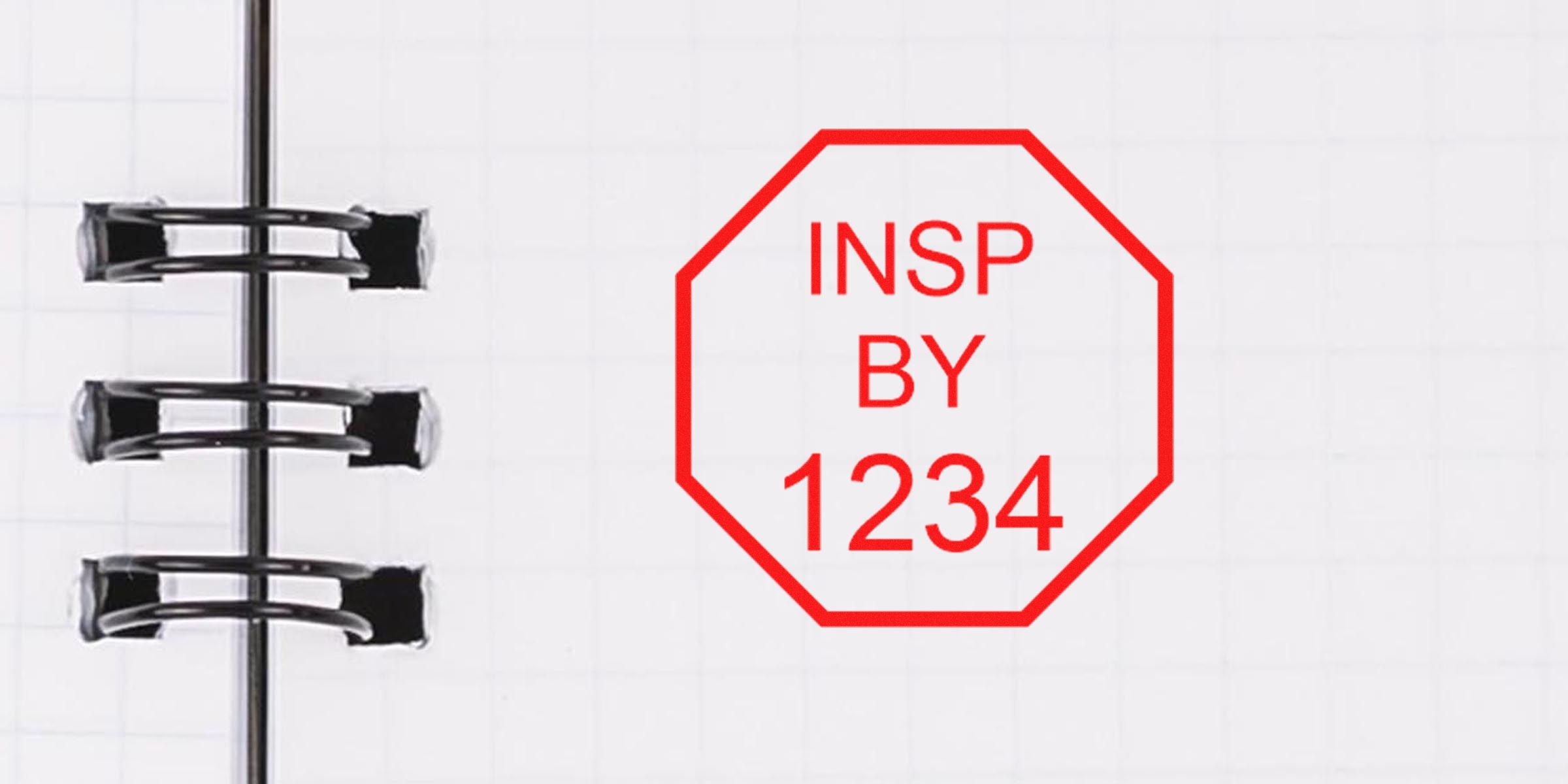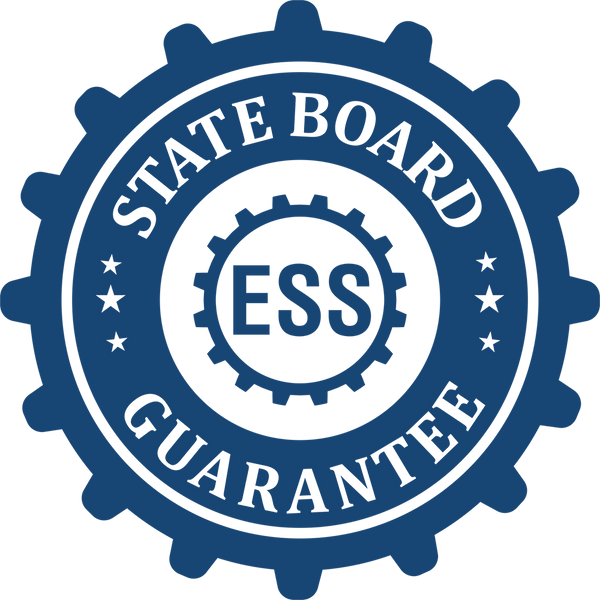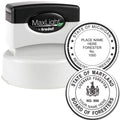Whether you’re running a large production line or just need a reliable way to track product quality at home, a QC inspection stamp brings consistency and order to your process. Think of it as a small but mighty tool that simplifies your daily workflow. You mark each finished item or document confidently, knowing you’re meeting high-quality standards. A great inspection stamp can speed up your tasks and keep your records crystal clear for audits or internal checks. In this post, you’ll learn what sets a custom inspection stamp apart from an off-the-shelf option, plus get tips on how to choose the right one for your needs.
Understand QC Inspection Stamps
A QC (quality control) inspection stamp is basically an inked impression that indicates an item or document has passed a specific quality criterion. If you’re double-checking machine parts, verifying packaging, or approving documents in an office, these stamps give you an immediate “green light” system. They also make your records neat and traceable.
Why Stamps Matter For Quality
- They add consistency: Rather than signing or scribbling your initials, you get a clean, uniform mark.
- They save time: Just one swift press replaces multiple steps in your approval process.
- They boost credibility: Clients and regulators alike tend to trust standardized markings that clearly signal QA or QC checks.
By using a stamp, you’re sending a clear message that your operation is organized and professional. It’s easier to spot which items passed inspection and which didn’t—a must-have for businesses that value speed and efficiency.
Discover Key Benefits Of Custom Stamps
Many people ease into quality control by using generic stamps labeled “Approved” or “Inspected.” That might work at first. Over time, though, you might crave more specialized text or a unique logo to reinforce your brand identity. That’s where custom stamps step in: they’re tailored to your exact needs, whether you want a part number, date, or a personalized message.
Personalization For Your Brand
Sometimes, a small mark can help customers remember who you are. If you’re dealing with frequent client-facing documents, a custom impression that includes your business name or logo stands out. By pairing your approval process with something visually appealing, you create a subtle but memorable statement. If you need a logo-based option, consider checking out our company logo inspection stamp, which is specifically designed to showcase your brand clearly.
Enhanced Record-Keeping
Custom designs often include fields like lot numbers, dates, or operator initials. This integrated format helps track items throughout their lifecycle. Say you come across an issue a few months down the line—you can simply look for that stamp impression. It will often point to who approved it and when. That traceability is a big deal in industries such as manufacturing, engineering, and food processing, where product origins and quality data have to be accurate.
Choose The Right Materials
Shopping for a new stamp can feel overwhelming, with so many materials and styles to consider. Some stamps feature wooden handles, while others come with self-inking mechanisms. Each has its own perks, so it pays to figure out which is a good fit.
Wooden Handle
Using a classic wooden handle is still a popular choice. It’s sturdy, cost-effective, and feels comfortable in your hand. You’ll need a separate ink pad, but wooden-handle stamps allow you to switch among different ink colors if that’s important to your workflow.
- Pros: Usually more affordable, easy to store, flexible in ink choice.
- Cons: Manual inking can slow you down if you’re stamping a large batch.
Self-Inking And Pre-Inked
Self-inking stamps come with a built-in ink pad. Each time you press down, the text or logo re-inks itself—handy for quick, repetitive stamping. Pre-inked options store the ink within the stamp itself, so you can get thousands of impressions before refilling.
- Pros: Fast stamping, consistent impressions, little to no smudging.
- Cons: Slightly higher initial cost, refills must be purchased for specific models.
Optimize Your Ink And Application
Ink choice can make or break your stamp’s performance. Certain surfaces, like plastics or metal parts, might require quick-drying, heavy-duty inks, while paper might be fine with standard water-based ink. If you choose the wrong kind, you risk smears, smudges, or faint impressions.
Pick The Right Ink
- Water-Based Inks: Great for paper, cardboard, or standard office use. They dry quickly but can fade on glossy or non-porous materials.
- Permanent Fast-Dry Inks: Ideal for plastic, metal, or glossy labels. They bond faster to surfaces and hold up better against moisture or friction.
- Specialty Inks: Look for UV or solvent-resistant inks if you have very specific industrial needs, like marking components that will face high heat or chemical exposure.
Avoid Common Stamping Mistakes
- Press Straight Down: Tilting the stamp can lead to uneven prints.
- Use Even Pressure: Apply consistent force to avoid partial impressions.
- Test On Scrap Material: Always do a quick test on the same type of surface before committing to a large batch.
Trust ESS For Top-Notch Stamps
Finding a supplier who truly understands your needs makes all the difference. That’s where ESS comes in. Our family-owned and operated business has been around since 1964, and we’ve dedicated decades to creating high-quality custom stamps for inspections, quality assurance, and beyond.
Family-Owned Since 1964
Our history speaks to our reliability. Over the years, we’ve built a reputation for delivering exactly what we promise. We’ve embraced new technologies, too, so you always get a massive range of design choices and fast service—without ever losing that personal touch.
Fast Turnaround And Friendly Support
When you place an order, you don’t want to wait forever to receive it. At ESS, we pride ourselves on quick turnaround times so you can keep your production lines moving. We also believe in helpful, human support. You can ask us anything, anytime—we’ll be happy to guide you every step of the way, whether you’re a small business or a high-volume industry client.
Follow Best Ordering Practices
Ready to order your custom QC marking? You’ll find that planning ahead makes the process smoother. In fact, a little prep work ensures you get an accurate design on time and within budget.
Specify The Right Text
Determine what specific wording you need. Does your business require an “Approved” line, a date field, or a space for operator initials? Make sure you consider every piece of information you might want on the stamp. Think through multiple scenarios, like how you’ll use it in daily operations or potential expansions in the future.
Choose Your Ink Color Wisely
Don’t forget that you can opt for colored ink. Bright shades like red or orange can highlight urgent items, while standard black or blue might suffice for general approvals. If you’re using color to differentiate product stages, it’s helpful to plan that out before sending in your design.
Contact Support If Unsure
If you’re stuck between self-inking or wooden-handle stamps, or you haven’t completely nailed down your design, don’t hesitate to reach out to our team at ESS. We’ll help you figure out the best route—our experience spans numerous industries, so it’s likely we’ve encountered a situation just like yours before.
Practical Tips For Using Your Stamp
Once you’ve chosen your perfect QC stamp, it’s helpful to adopt a few smart habits. These will keep the stamp in top condition and your impressions looking the way you want.
Keep It Clean
Gently wipe your stamp’s surface if you notice ink buildup. Over time, residue can distort your impressions. A quick wipe with a slightly damp cloth does wonders.Store Properly
If you’re using a traditional wooden stamp with a separate ink pad, don’t leave the stamp resting face-down on the pad all day. Keep it upright or in a dedicated stamp holder so the impression remains crisp.Rotate Pads If Necessary
If your stamping volume is high, rotating between two or three ink pads prevents over-inking and messy results. This approach also helps each pad last longer.Document Your Process
Consider creating a small reference log or binder, especially if multiple employees use the same inspection stamp. That way, you’ll maintain a standard approach to stamping.
Compile Comprehensive Records
Stamps can be a powerful piece of the puzzle, but the best results come from integrating them into your overall quality control procedure. If you maintain digital or paper records, be sure to note the location and date of each stamp impression. That extra layer of documentation makes audits, recalls, or general inspections far easier—you simply match the item number or file reference to the stamped record.
Pair Digital Logs With Physical Marks
Think about linking your QC stamps to corresponding online forms or spreadsheets. For instance, you might assign each product batch a unique code. When you apply your stamp, also log that code digitally with a quick note about any findings and your initials. This synergy of physical and digital tracking creates a dependable chain of accountability.
Consider Expanding Your Stamp Collection
One stamp may not handle all your needs, especially if you oversee various quality checks. You might find it useful to distinguish between:
- “Verified”: For items that completed their initial stage of testing.
- “Approved”: For items ready for final packaging or shipping.
- “Rejected”: For items that failed inspection.
- “Sample Only”: For prototypes or tests that you don’t want confused with live inventory.
Splitting these labels across different stamps makes your process clearer and less prone to error. You’ll react faster to potential quality glitches, and your entire team sees, at a glance, where each item stands in the production flow.
Evaluate Cost And Return On Investment
Some small businesses shy away from custom stamps because of perceived cost. In reality, a well-made stamp quickly pays for itself by saving time on every inspection. You reduce confusion over hand-written notes, cut down on pen usage, and standardize how your team marks products. Plus, pairing your brand with a clean, professional impression can improve customer trust. All these benefits translate to tangible returns when you look at overall productivity and quality consistency.
Budget For Upgrades
Over time, your stamping needs might evolve. You may need stamps to handle more rigorous environments or a new brand logo after rebranding. Plan for small expansions as your needs grow. By aligning your stamping strategy with your long-term goals, you’ll protect your budget from last-minute surprises.
Maintain Compliance And Standards
If you’re in a regulated industry, such as food processing or medical device manufacturing, compliance can be a huge headache. A custom inspection stamp can help ensure you’re on the right track. You can label each product with mandatory information that meets auditing standards. Regulations often require high legibility and consistency, so a clearly visible stamp can keep your records organized and your auditors happy.
Schedule Periodic Reviews
No matter how thorough you are at the start, it’s good practice to revisit your stamping process every few months. Are your impressions still clear? Do you need to adjust your design for new products or regulatory changes? By running a quick stamp check, you’ll avoid issues such as smudged marks, incorrect lot numbers, or outdated text.
Reap The Rewards Of Good Preparation
Preparation makes your stamping process more than just a formality. By selecting the right design, ink, and stamping style, you can transform each inspection into a quick, fail-safe sign-off. You’ll notice a boost in efficiency as your team no longer questions whether something has passed or not. Your customers or supervisors will also see a professional touch in every approved item.
So, the next time you check items off your to-do list, consider how much faster and smoother it would be if your entire inspection setup were standardized. With a QC inspection stamp, you’re not just rubber-stamping; you’re enhancing your business workflow.
Frequently Asked Questions
How Do I Clean My Stamp Without Damaging It?
A clean, soft cloth slightly dampened with water is usually enough. Gently wipe away any ink buildup on the surface of the stamp. Avoid harsh chemicals, as they may dissolve the rubber or polymer.Which Ink Works Best For Non-Porous Surfaces?
Fast-dry or permanent inks are your best bet for plastic, metal, or glossy paper. They bond more effectively to smooth surfaces, minimizing smudges and smears.Can I Include Multiple Lines Of Text On A Single Stamp?
Absolutely. Many customers choose a design that includes a line for dates, signatures, or product codes, all on one stamp. Just ensure the layout is clear so each field is readable.Is a Self-Inking Stamp Worth The Extra Cost?
If you do a lot of repetitive stamping, you’ll likely find the convenience of a self-inking stamp worthwhile. It speeds up each impression, and you won’t need a separate pad. For occasional use, a classic wooden stamp with an ink pad might be sufficient.Why Choose ESS Over Other Suppliers?
ESS is family-owned and operated since 1964, and we pride ourselves on top-notch customer service with a personal touch. We know custom stamps, inspection stamps, and QC stamps inside out, and we offer a fast turnaround so you won’t be left waiting.
By now, you have a clear picture of how a quality inspection stamp can reshape your workflow. Whether you’re just starting to organize your quality control process or refining a long-standing system, the right stamp goes a long way toward consistency and clarity. Explore your options, ask questions when you need guidance, and enjoy the confidence that comes from having a well-structured QC system. If you ever need help, reach out to ESS. We’re here to make your stamping process smooth, efficient, and aligned with your business goals.


















